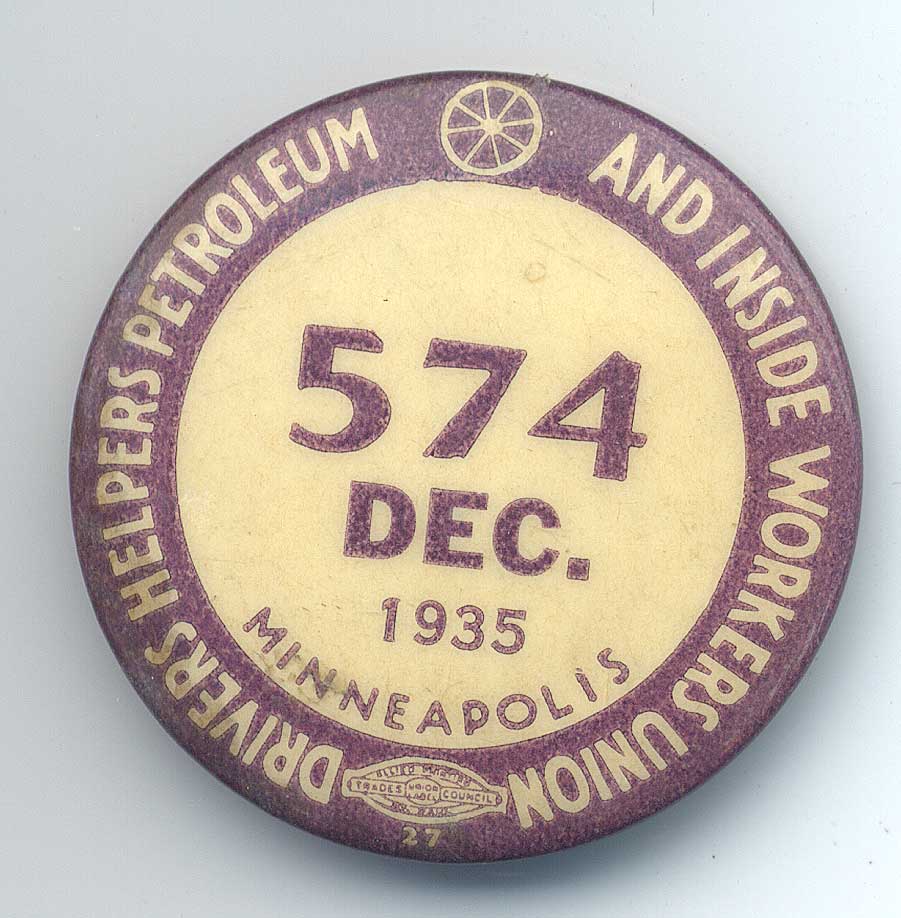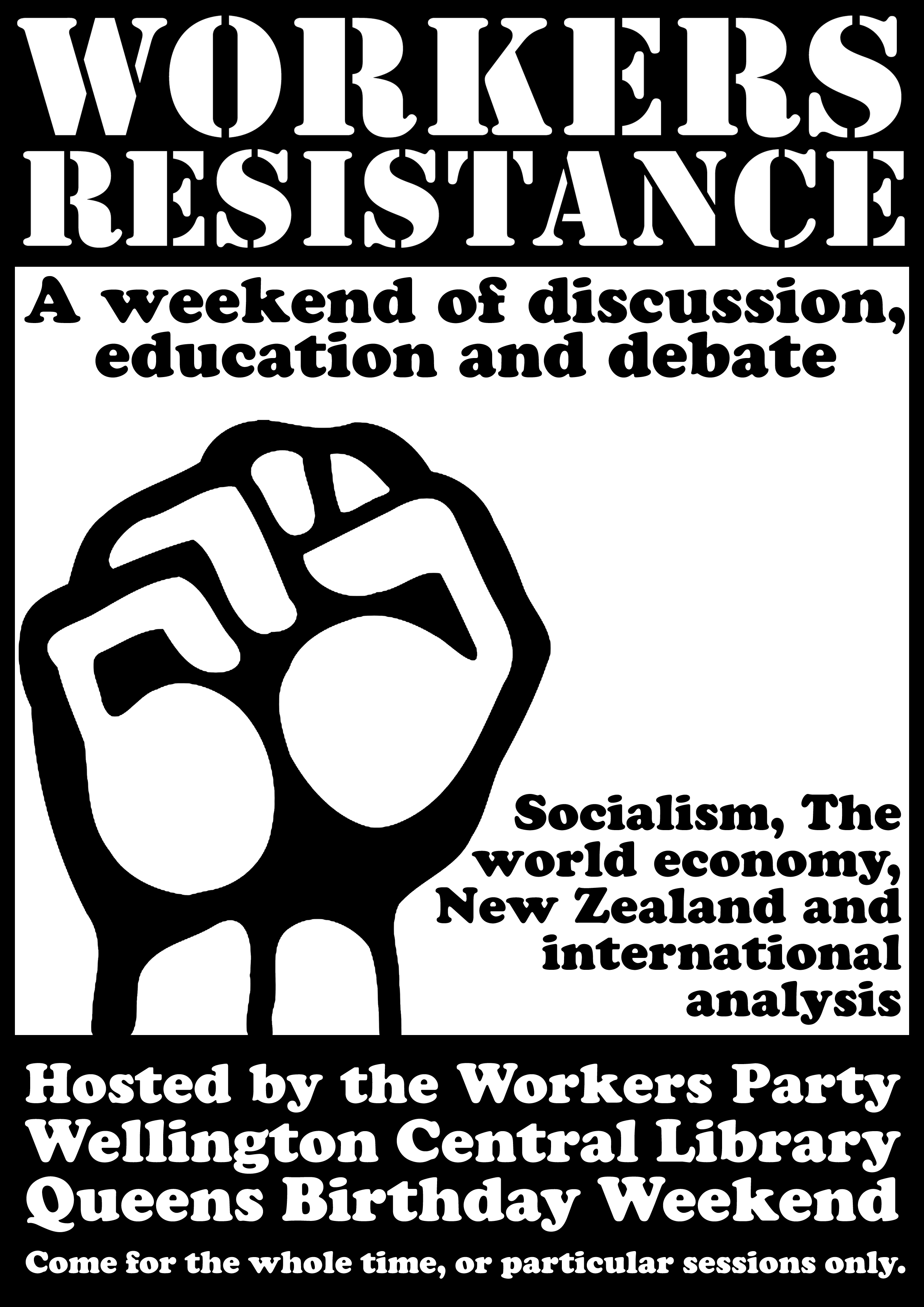Teamster Rebellion is a classic, and highly recommended for anyone interested in strengthening the union movement as we head into recession. First in the Teamster series, this compelling account of the 1934 strikes in Minneapolis sheds light on the rewards of worker militancy. Author Farrell Dobbs was one of the central leaders at the time, and he lays out the various strategies and pitfalls of the strike with admirable clarity.
Dobbs makes it clear that the biggest setback for workers in the Great Depression was a bureaucratic union movement. In fact, membership in unions actually declined in the early days of the Depression. Dobbs describes the “business unionism” of the American Federation of Labour, involving strict division of crafts, a minimum of strikes and suppression of dissidence.
This is comparable to the behaviour of trade union brass in contemporary NZ, who refused to provide coordination for responses to attacks on workers in the late ’80s and early ’90s – with such laudable exceptions as the Maritime Union. Unionisation has since declined, in keeping with the pattern Dobbs describes. Teamster Rebellion is a great book in large part because of its pertinence.

The intro states, “Teamster Rebellion is not a manual or a handbook.” While this is certainly true – revolutionaries must base their approach on objective conditions – Teamster Rebellion is an enormously practical, relevant work. Dobbs packs his narrative with tactical detail, treating his subject as a battle history. And that it is; when cops resort to violence, the workers of Local 574 arm themselves. They clobber the police officers, an incident which is broadcast in newsreels across the nation to thunderous applause. When the local Governor declares martial law, a war of attrition develops between workers and employers, with government forces caught in the crossfire. However, the leadership of Local 574 is careful to avoid unnecessary skirmishes; workers only use violence defensively. Describing the state of the union, Dobbs explains, “relations between the strike committee and the union ranks were somewhat akin to the Leninist principle of democratic centralism; democracy in reaching decisions; discipline in carrying them out.” This is fundamentally a book about organization, and why Local 574 prevailed.
This emphasis on strategy allows Dobbs to avoid getting bogged down by sectarian squabbling, while retaining a staunchly revolutionary perspective. When the pro-Moscow CP makes attacks on the Trotskyist leadership of Local 574, Dobbs simply engages on tactical grounds. While the CP argues the purpose of the strike should be exposing local government, he points out that all goals are secondary to recognition of Local 574 as a union. When the reactionary employers’ association the Citizen’s Alliance attempts to use red-baiting to scare off workers, Dobbs highlights the benefits of a fighting leadership – under the previous leadership, the union wasn’t even recognised.
These arguments are directly relevant in early 21st Century New Zealand. When Go Wellington locked out its drivers for taking industrial action, some observers resorted to scaremongering over the involvement of openly revolutionary socialists. However, their unwillingness to be cowed by strong-arm tactics had real benefits; the bosses lifted the lockout and improved on their previous “final offer.” This won over some of the more skeptical rank-and-file, demonstrating that there isn’t an essential difference between a revolutionary and a realistic union leader. On the issue of union recognition, Unite’s recent battle with McDonalds concerned the company’s unwillingness to recognise any union. It is strategically vital to place union recognition as top priority; as Dobbs argues, every other battle follows that one.
 Further, Dobbs argues for the importance of forging class solidarity; between workers of different crafts, between the employed and unemployed, between men and women. This is sorely missing in the current union ethos, where unions exist to represent the interests of a particular craft. A recent attempt to merge unions representing hospitality and distribution workers unfortunately collapsed due to political differences, but this atleast demonstrates that the idea isn’t without support. Local 574 fought a major battle to represent not only truck drivers, but helpers, platform workers, warehouse and shipping department employees. These workers had common interests, and working together had tactical advantages. The union also formed a women’s auxiliary, an Unemployed Council and a relationship with local farmers.
Further, Dobbs argues for the importance of forging class solidarity; between workers of different crafts, between the employed and unemployed, between men and women. This is sorely missing in the current union ethos, where unions exist to represent the interests of a particular craft. A recent attempt to merge unions representing hospitality and distribution workers unfortunately collapsed due to political differences, but this atleast demonstrates that the idea isn’t without support. Local 574 fought a major battle to represent not only truck drivers, but helpers, platform workers, warehouse and shipping department employees. These workers had common interests, and working together had tactical advantages. The union also formed a women’s auxiliary, an Unemployed Council and a relationship with local farmers.
This strike was not solely a battle to improve truck drivers’ wages and  conditions. It was a battle to strengthen the working class, one which turned Minneapolis into a union town. Teamster Rebellion contains a wealth of information not only about the politics of unions and employers, but about the internal politics of the union movement. It’s a must.
conditions. It was a battle to strengthen the working class, one which turned Minneapolis into a union town. Teamster Rebellion contains a wealth of information not only about the politics of unions and employers, but about the internal politics of the union movement. It’s a must.
-Ian Anderson
